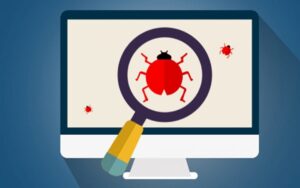Automation Testing vs Manual Testing: Which is the Right Choice for Your Project?
When it comes to software testing, there are two primary methods: manual testing and automation testing. Both approaches have their own advantages and disadvantages, and the decision to choose one over the other depends on a variety of factors.

Manual Testing
Manual testing is the process of manually executing test cases to find defects in software applications. It is a time-consuming process that involves a human tester performing a series of actions to verify the functionality of the software.
One of the advantages of manual testing is that it allows testers to use their intuition and experience to identify potential issues that may not have been considered during the development process. Manual testing is also an effective method for testing user experience, as it allows testers to evaluate the software from the perspective of the end-user.
However, manual testing has its limitations. It is prone to human errors, and the testing process can be tedious and repetitive. Additionally, manual testing is not scalable, making it difficult to test large and complex applications.
Automation Testing
Automation testing, on the other hand, involves the use of software tools to execute test cases automatically. It is a faster and more efficient method of testing, and it allows testers to test large and complex applications quickly and accurately.
One of the main benefits of automation testing is that it reduces the risk of human error. Automated tests are repeatable, and they can be executed multiple times without any errors. This makes it an ideal method for testing applications that require frequent testing, such as those in Agile and DevOps environments.
However, automation testing also has its limitations. It requires a significant initial investment in time and resources to create test scripts and set up the testing environment. Additionally, automation testing is not suitable for testing user experience or for identifying issues that require human intuition and experience.
Choosing the Right Approach – Automation Testing vs Manual Testing
The decision to choose between manual testing and automation testing depends on a variety of factors, including the type and complexity of the application, the available resources, and the timeline for testing.
For applications that require a high degree of accuracy and user experience, manual testing may be the best option. On the other hand, for applications that require frequent testing and a faster time to market, automation testing may be the better choice.
In some cases, a combination of both manual and automation testing may be the most effective approach. This hybrid approach allows testers to leverage the benefits of both methods and achieve comprehensive testing coverage.
Please find below a step-by-step comparison of automation testing and manual testing, to help you make an informed decision.
Step 1: Test Planning
The first step in any testing project is to create a comprehensive test plan. This plan outlines the objectives of the testing project, the scope of the testing, the timelines, and the resources required.
In manual testing, the test plan is created by the testing team, and it outlines the test cases to be executed manually. In automation testing, the test plan is created by the automation testing team, and it outlines the test cases to be automated using testing tools.
Step 2: Test Case Creation
In manual testing, the test cases are created by the testing team, and they involve a human tester manually executing each test case. The test cases are designed to validate the functionality of the software and identify any defects.
In automation testing, the test cases are created using automation testing tools. The testing team creates test scripts that simulate user actions, and these scripts can be executed automatically.
Step 3: Test Execution
In manual testing, the testing team manually executes each test case and records the results. Any defects identified during testing are reported, and the software is retested once the defects have been resolved.
In automation testing, the test scripts are executed automatically using automation testing tools. The results are recorded automatically, and any defects identified are reported. The software is retested once the defects have been resolved.
Step 4: Test Maintenance
In manual testing, the test cases are updated manually as the software changes. This requires the testing team to review and update the test cases regularly.
In automation testing, the test scripts are updated automatically when changes are made to the software. This reduces the need for manual intervention and ensures that the test cases are always up-to-date.
Step 5: Test Reporting
In manual testing, the testing team creates test reports manually, and these reports are reviewed by the stakeholders. The reports provide an overview of the testing project and highlight any defects identified during testing.
In automation testing, the test reports are generated automatically using the automation testing tools. The reports provide a comprehensive overview of the testing project, including the number of test cases executed, the number of defects identified, and the pass/fail rate.
Conclusion
In conclusion, both manual testing and automation testing have their own advantages and limitations. The choice between the two depends on the specific requirements of the project, the available resources, and the timeline for testing.
Ultimately, the key to successful software testing is to have a comprehensive testing strategy that includes both manual and automation testing. By leveraging the strengths of each approach, testers can ensure that software applications are tested thoroughly and accurately, leading to a higher quality product and a better user experience.






